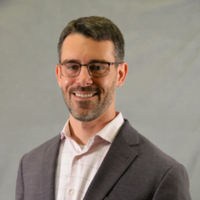Updates on Black Representation in Economics
Today marks the beginning of Black History Month. In February 2021, I wrote about the lack of Black representation in the field of economics, especially among economists working for the Federal Reserve (the Fed). As I wrote then, increased representation in Economics will improve our chances of producing accurate and useful results across studies of any focus, and especially those focused on issues of importance to minority populations.
The most recent diversity data from the American Economics Association (AEA) and from the Fed come only from their 2021 reports, but they do show some improvement from the 2020 report data in my previous article.
According to the AEA’s most recent data, among degrees awarded in Economics in 2019-2020, 5.18% of Bachelors, 5.93% of Masters, and 4.31% of PhDs went to Black or African American candidates. These are somewhat mixed results when compared with data from 2018-2019, when Black or African American economics graduates made up 5.16% of Bachelors, 7.43% of Masters, and 2.8% of PhDs. Economics still lags behind STEM fields in percent of minority graduates at all degree levels.
In December 2021, the Fed employed 945 economists. Twenty-eight percent (269) of them identified as a race other than White. Only 14 economists (1.5%) identified as Black or African American single-race, and 7 (0.7%) identified as two or more races, races not specified. This is a slight improvement from 1.3% Black single-race and 0.7% two or more races reported in early 2021.
I started writing this with hopes of finding more recent data and greater improvements. I am encouraged to see even these small improvements in just one year, though. Except for in economics Masters programs, Black/African American representation in each of the categories I reported on in early 2021 had improved by the end of 2021. I am especially excited to see the relatively large jump in the percent of Black/African American Ph.D. graduates. Clearly, though, with about 14% of the U.S. population identifying as Black, the economics profession – and especially the Fed – have a lot of work yet to do to recruit, graduate, and employ Black economists at a rate that compares with national demographics.
I am proud that the AEA is doubling down on its efforts to recruit Black students into the field. In 2022, they awarded the honor of Distinguished Fellow – for the first time posthumously – to Dr. Sadie Alexander, a scholar who would have championed this work of improved diversity, equity, and inclusion in economics.
Dr. Alexander graduated from University of Pennsylvania in 1921, becoming the first African American to earn a Ph.D. in economics. She was the second Black woman to earn a doctorate in any discipline in the U.S. Because of her race and gender, Alexander was denied employment in economics, so she went back to school and became the first woman to graduate from the University of Pennsylvania Law School. She worked in law for the remainder of her career, was the first female secretary of the National Bar Association, and served as the first national president of the Black women’s sorority Delta Theta Sigma.
Through all her accomplishments in law and service, Alexander was always an economist at heart. Until her death in 1989, Alexander advocated publicly for inclusion of women and minorities, especially in the workplace, as a necessary component of a successful capitalist democracy.
I end with her words, an appropriate reminder to us all:
“We must provide the hope and the certainty of productive employment to everyone, and especially to Negro young people. The basic purpose of this comprehensive design, this total process, is the development of the deprived, the neglected — the discriminated against — the minority — to its full potential. This is necessary not only to meet the ends of social justice and morality, to fulfill the guarantees of our constitution and laws, but because in this era of automation, when tens of thousands of unskilled and semi-skilled jobs are being eliminated, it becomes an economic imperative which is basic to our very existence as a free society.” — Sadie Alexander, 1963
————-
Dr. Melissa Trussell is a professor in the School of Business and Public Management at College of Coastal Georgia who works with the college’s Reg Murphy Center for Economic and Policy Studies. Contact her at mtrussell@ccga.edu.
